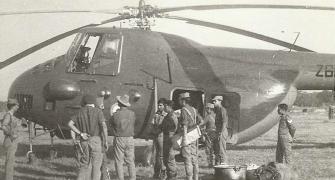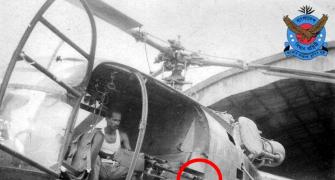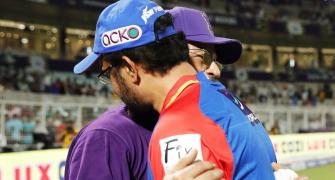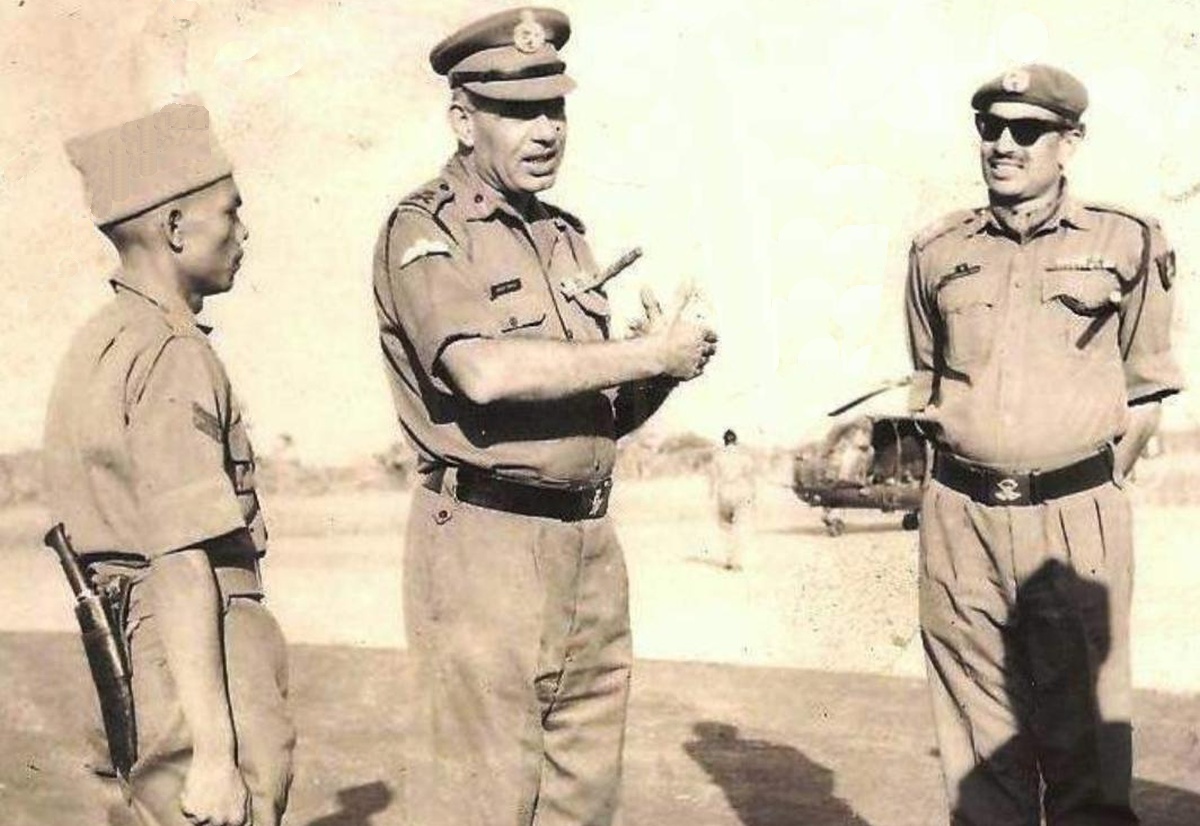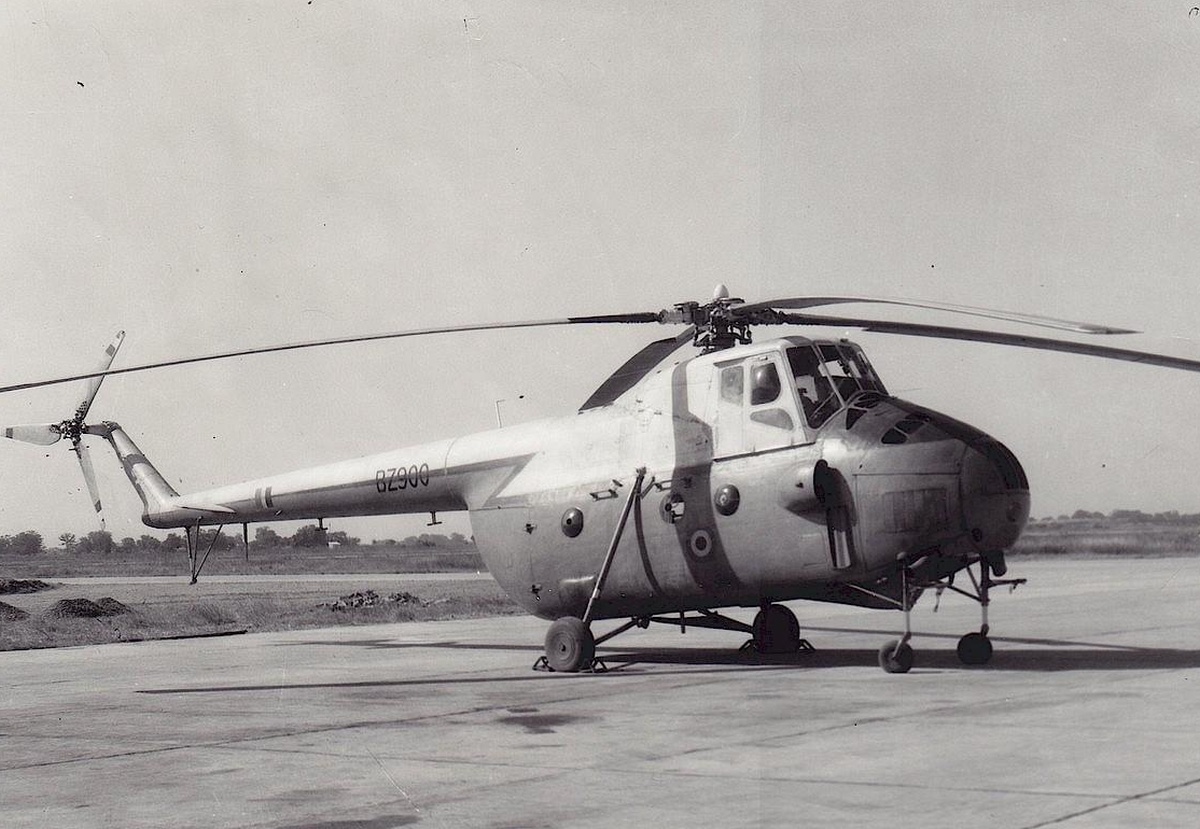'Overnight, the Chetak had new markings and thereafter flew on the call sign, Echo-Bravo-Romeo.'
'By all accounts, this was the first aircraft of the Bangladesh Air Force.'
Air Commodore Nitin Sathe (retd)'s thrilling account of how the Bangladesh Air Force was born.

On October 8, 1971, Air Force Day, Air Commodore C M Singla (retd) tells Air Commodore Nitin Sathe (retd) he was summoned to Johrat (Assam) to receive another machine being brought there in a transport aircraft.
"The serial number of the machine, as recorded in my flying logbook, is Z-364," says Singla Sir.
The Chetak was modified by our technicians and two rocket pods, each carrying seven rockets, was fitted on either side. These pods were taken from the Mystere aircraft, which was going out of service at that time. The rockets could be fired in salvo (all together) or in pairs as the situation warranted.
"Fitted inside the compartment behind the pilots was a twin-barrel machine gun, also taken out of an aircraft. The left doors of the helicopter had to be removed as the gun barrels protruded out of the helicopter," says Singla Sir.
The firing was done by an operator who sat behind the weapon and swivelled it to aim at the targets. It was a jugaad modification, something that was never done on any other IAF machine.
The helicopter flew low and slow and was an easy target for trigger-happy troops on the ground. Only time would tell if this modification was worth the trouble.
With the extra weight and the additional drag, the helicopter behaved sluggishly. But then that was to be expected.
"Chandan Singh (then Group Captain Chandan Singh, later Air Vice Marshal, who was awarded the Mahavir Chakra for his gallantry in the 1971 War) and I flew the aircraft to Dimapur (Nagaland) as soon as it was assembled at Johrat. We now had two Chetaks available -- one passenger version and one armed.
"We soon had the specialist tradesmen and rockets flown in. What was left was the training -- I was to train the Bangla pilots to fire from the aircraft by day and night. But I too had no experience, or clue, about firing from a helicopter," says the ace.
Singla voiced his concern to Chandan Singh, "We need to harmonise the sights, work out flying parameters, devise tactics and then carry out some target practice. I have no experience in all this. Who will guide me?" Singla asked Chandan Singh.
In his characteristic style, Chandan Singh waved away Singla's apprehensions, "You will learn. I am confident that you will accomplish this task!"
"This was the first of the many pioneering tasks that I was entrusted with during my long innings in the IAF," says a nostalgic Singla.
A simple sight was fitted on the Chetak for aiming and practice began in earnest.
"After having got a hang of the sluggish aircraft, one had to practise aiming and dummy-firing at targets. A Dakota was tasked to drop some parachutes over the jungle on the hill slopes on which we wanted to practise actual firing. Unfortunately, they went right through the canopy of trees and could not be sighted from the air."
They then decided to take a few men in the chopper and hover over the grassy slopes. The men jumped from the helicopters with the parachutes and nailed them into the ground, thus making them excellent targets to fire at.
Singla remembers how he enjoyed learning and teaching his students to use the helicopter as a weapon delivery platform. "I found myself enjoying the game; free of rules, regulations and red tape."
A firing procedure, involving climbing to a certain height and getting into a dive while aiming at the white target, was evolved. At the correct height and distance from the target, the trigger was pressed and the rockets were on their way.
"In a matter of time, the pupils became quite accurate and the parachutes were blown to bits. We had to re-lay them and continue our practice till I could report to the boss at Jorhat that the three pupils could deliver the weapons reasonably by day."
Chandan Singh asked the foreign pilots to design an emblem for the helicopter and give it a name and number.
After a lot of lively deliberations and excitement amongst them, they came up with the answer. A red roundel with the East Pakistan map superimposed on it was to be painted on the tail stabiliser of the helicopter. The helicopter was to be numbered EBR (which stood for East Bangladesh Rifles actually).
Singla Sir says, "Overnight, the Chetak had new markings and thereafter flew on the call sign, Echo-Bravo-Romeo. By all accounts, this was the first aircraft of the Bangladesh Air Force. My logbook entries of flying the aircraft change from Z-364 to EBR from October onwards."
Having completed his task at Dimapur, Singla Sir was back with his unit in Bagdogra (West Bengal) in early October 1971.
It had been time well spent, with a lot of takeaways for the QFI. "I now found life boring with routine flying activities and no excitement!" he says.
But this period of "boredom" was short-lived. He was soon summoned, this time by name, to Dimapur to carry our further training and ended up flying in the 1971 War from here itself.
The author of three books, you can read Air Commodore Sathe's earlier articles here.


